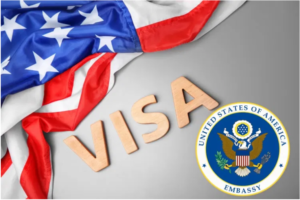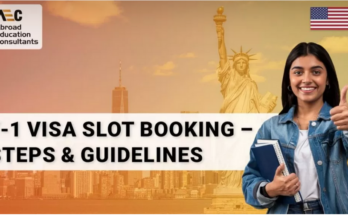Apply for American Family Visa Sponsorship Program if you have a family member living as a citizen or permanent resident in the States, you may be eligible to be sponsored to get a U.S. Green Card. Fill out our immigration assessment form and we’ll get back to you in order to discuss your eligibility and options.

All family sponsorship applications are still being accepted and processed.
- Family members of a U.S. citizen or lawful permanent resident are now allowed to cross the U.S. border as long as they show no signs or symptoms of COVID-19.
- Do not travel if you are sick, or if you have been around someone with COVID-19 in the past 14 days. Do not travel with someone who is sick.
- Stay home for 14 days from the time you arrived in the US from international travel.
For more updates on the Coronavirus, visit our page on how the Coronavirus will affect U.S. immigration.
Update on U.S. Family Immigration and Coronavirus:
US Family Immigration Visa – What Is Family-Based Petitions
Family-Based Petitions allow for individuals in the United States to sponsor their families to immigrate to the United States. The Immigration and Nationality Act allows for the immigration of foreigners to the United States based on a relationship to a U.S. citizen or legal permanent resident.
Who Can a U.S. Citizen Sponsor
If you are a U.S. Citizen, you may petition for the following relatives, as long as you can prove the relationships:
- Husband or wife;
- Unmarried children under 21 years old;
- Unmarried son or daughter over 21 years old;
- Married son or daughter of any age;
- Brother (s) or Sisters(s), if you are at least 21 years old.
- Mother or father, if you are at least 21 years old
Who Can a Green Card Holder Sponsor
If you are a lawful permanent resident (green card holder), you may petition for the following relatives, as long as you can prove the relationships:
- Husband or wife;
- Unmarried child under 21 years of age;
- Unmarried son or daughter over 21 years of age.
What Happens After You Petition for a Relative
If your relative is already in the United States, they may apply to adjust status to become a Green Card holder (lawful permanent resident) after a visa number becomes available using Form I-485. If your relative is outside the United States, your petition will be sent to the National Visa Center (NVC).
RELATED: 3,000+ Visa Sponsorship Jobs in the United Kingdom (257 new) – Apply Now!
The NVC will forward your petition to the appropriate U.S. consulate when a visa becomes available and your relative will be notified about how to proceed. This process is referred to as “consular processing.”
What Happens After You Petition for a Relative
If your relative is already in the United States, they may apply to adjust status to become a Green Card holder (lawful permanent resident) after a visa number becomes available using Form I-485. If your relative is outside the United States, your petition will be sent to the National Visa Center (NVC).
The NVC will forward your petition to the appropriate U.S. consulate when a visa becomes available and your relative will be notified about how to proceed. This process is referred to as “consular processing.”
Are You Eligible for Family Sponsorship?
Depending on your situation, you may be eligible to apply for a U.S. Green Card using a family-based petition for having relatives living in the U.S. as U.S. citizens or permanent residents (also known as Lawful Permanent Resident or LPR). Certain family members may be eligible to sponsor or petition you for a Green Card.
Family-Based Immigrant Visa Categories
There are two groups of family-based immigrant visa categories: Immediate Relative and Family Preference.
Immediate Relative
These visa types are based on a close family relationship with a United States citizen.
- IR-1: Spouse of a U.S. Citizen
- IR-2: Unmarried Child Under 21 Years of Age of a U.S. Citizen
- IR-3: Orphan adopted abroad by a U.S. Citizen
- IR-4: Orphan to be adopted in the U.S. by a U.S. citizen
- IR-5: Parent of a U.S. Citizen who is at least 21 years old
Family Preference
These visa types are for specific, more distant, family relationships with a U.S. citizen and some specified relationships with an LPR.
- Family First Preference (F1): Unmarried sons and daughters of U.S. citizens, and their minor children, if any.
- Family Second Preference (F2): Spouses, minor children, and unmarried sons and daughters (age 21 and over) of LPRs.
- Family Third Preference (F3): Married sons and daughters of U.S. citizens, and their spouses and minor children.
- Family Fourth Preference (F4): Brothers and sisters of U.S. citizens, and their spouses and minor children, provided the U.S. citizens are at least 21 years of age.
There are unlimited visas available in the Immediate Relative group, whereas there are a specific amount of Family Preference visas available annually.
The 4 Steps to Apply for American Family Visa Sponsorship Program
There are specific steps to follow in order for a U.S. Lawful Permanent Resident to successfully sponsor a family member. These are:
- U.S. citizen or permanent resident files visa petition
- USCIS makes a decision on the visa petition
- Family Preference relatives wait until a visa becomes available
- Immigrant applies for an immigrant visa or Green Card
Step 1: Filing the Petition
To begin the sponsorship process, the U.S. Lawful Permanent Resident family member will need to mail a visa petition on USCIS Form I-130, along with accompanying documents, to U.S. Citizenship and Immigration Services (USCIS). The LRP must prove the family relationship is real.
Step 2: USCIS Makes a Decision
Once USCIS receives the petition, the officers will consider whether to approve or deny the request. If approved, the case file will be forwarded to the National Visa Center for further processing. If denied, it is possible for the petitioner to file a new petition after determining what changes need to be made to encourage approval. Upon approval, USCIS will forward the immigrant’s case file to the National Visa Center (NVC) for further processing.
Step 3: Preference Relatives Wait for Visa Availability
This step only takes place if the petitioner was in the Family Preference group. Relatives that are not considered “immediate” are not eligible for permanent residence right away, as there are annual limits on the number of Green Cards that can be approved. Thus, the immigrant joins a waiting list, and will usually wait at least a year before learning if a visa is available.
Step 4: Immigrant Applies for Visa or Green Card
If the petition has been approved, and a visa has become available, the immigrant would then submit an application for permanent residence. This is usually done by applying for an immigrant visa at a U.S. consulate outside the United States, and then once in the states, the immigrant would apply for the Green Card.
During the ensuing process, called “consular processing”, the immigrant will be required to fill out various forms, provide documents and take part in a medical examination.
Why Legal Help for Family Sponsorship is Important
Although the concept of family sponsorship seems straightforward, there are many exceptions and details of which to be aware. Instead of risking having your efforts rejected due to a missing detail on a document or an ineligible scenario, we recommend consulting with an experienced legal attorney who knows how to properly prepare successfully apply for American Family Visa Sponsorship program.
Click here to apply now.



